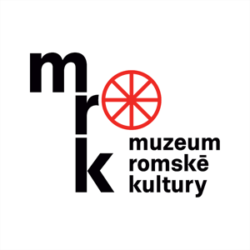Ladislav Tancoš
Ladislav Tancoš (born 1923, Petrovany, Prešov district – died 1998, Petrovany) was a trained tinsmith who led a folklore ensemble in which he danced and played the cimbalom. He collaborated on educational activities with the Roma writer Elena Lacková.[1]
[1] A leading Roma personality and writer who lived from 1921–2003, see her testimony in the database.
-
Testimony abstract
Ladislav Tancoš remembered that an order reached the commissars in their village (according to him the mayors were called commissars in those days) that the Roma should be sent to the labour camp at Petič. Tancoš avoided being sent to the camp because he was taken into the [Slovak] Army. He passed the psychological tests and was able to read and write, so they sent him to the anti-aircraft artillery in Žilina. Two young Roma from the village of Mirkovce were with him.[1] More came later, about twenty altogether, and so they formed what was called a gypsy company. After the outbreak of the Slovak National Uprising, the Germans, who apparently no longer trusted the Slováks, wanted to shoot them. Tancoš mentioned the so-called chief who had found out from a major by the name of Čilik[2] what the Germans were planning, and therefore planned to escape. This man had the key to the warehouse, so the soldiers took rifles and grenades and shot the guards, including Major Čilik, and fled to the station. They jumped into a cattle wagon which was heading for Banská Bystrica, where: transports were still headed at that time. Tancoš names every place he went through, including Tri Duby, as well as Ružomberok, Strečno and Dukla. He was not wounded; he always managed to escape somehow, he says.
He mentioned hunger, and the great many Roma who fought in the Slovak National Uprising. He talks about a Roma partisan from the village of Bidovce. The partisans sometimes hid in the cemetery in the village of Kakašovce,[3] where there was some gathering of the Germans. The chief German official spoke from a rostrum, and when he said “Heil Hitler!” the aforementioned partisan fired a bullet straight into his forehead. The German died on the spot and the partisans fled, except for the one from Bidovce who stayed there and covered their backs by shooting. The Germans caught him, put him in a barrel, nailed it shut, and took him to Prešov in a goods lorry. The partisan however managed to get out of the barrel and escaped. The Roma then wrote a song about it. Tancoš didn’t know the song, but he sang another one he learnt from the Roma from Košice.
Ladislav Tancoš describes what was done to the Roma in his village while he was in the army, and then fighting in the uprising. What was called “the steamer” was driven to the bigger Roma settlements. Every Roma, including the women and children, had to have the hair shaved from their bodies, including their armpits and everywhere else. Tancoš explains how humiliating it was for the women, because shaving had previously been a punishment only for those who were unfaithful. Then they [the gendarmes] took the clothes of the Roma, and their bedding and everything was steamed. According to Tancoš, that was done to all the Roma in eastern Slovakia.
How to cite abstract
Abstract of testimony from: HÜBSCHMANNOVÁ, Milena, ed. “Po židoch cigáni.” Svědectví Romů ze Slovenska 1939–1945.: I. díl (1939–srpen 1944). 1. Praha: Triáda, 2005. ISBN 80-86138-14-3, 776-778 (ces), 779-781 (rom). Testimonies of the Roma and Sinti. Project of the Prague Forum for Romani Histories, https://www.romatestimonies.com/testimony/ladislav-tancos (accessed 10/22/2025) -
Origin of Testimony
The interview with Ladislav Tancoš took place in 1985, when he was visiting his son in Prague. However, it was not a suitable situation in which to make a recording – a large number of relations had arrived to welcome him and it would be inappropriate to talk about the war in that atmosphere. They therefore decided to meet again sometime in the future, and Ladislav Tancoš might possibly write down his memories. It never happened. Nevertheless, the original testimony is published in the book, since some facts are unique from the historical point of view, despite the shortcomings.
Ladislav Tancoš met the editor Milena Hübschmannová in 1953 at the chateau of Štiřín, where a week-long nationwide workshop for those described as “Gypsy activists” used to be held. Tancoš was one of around twenty participants in the event. He later showed Hübschmannová around Roma settlements in the Prešov district, and sent her his three humorous short stories.
-
Where to find this testimony




